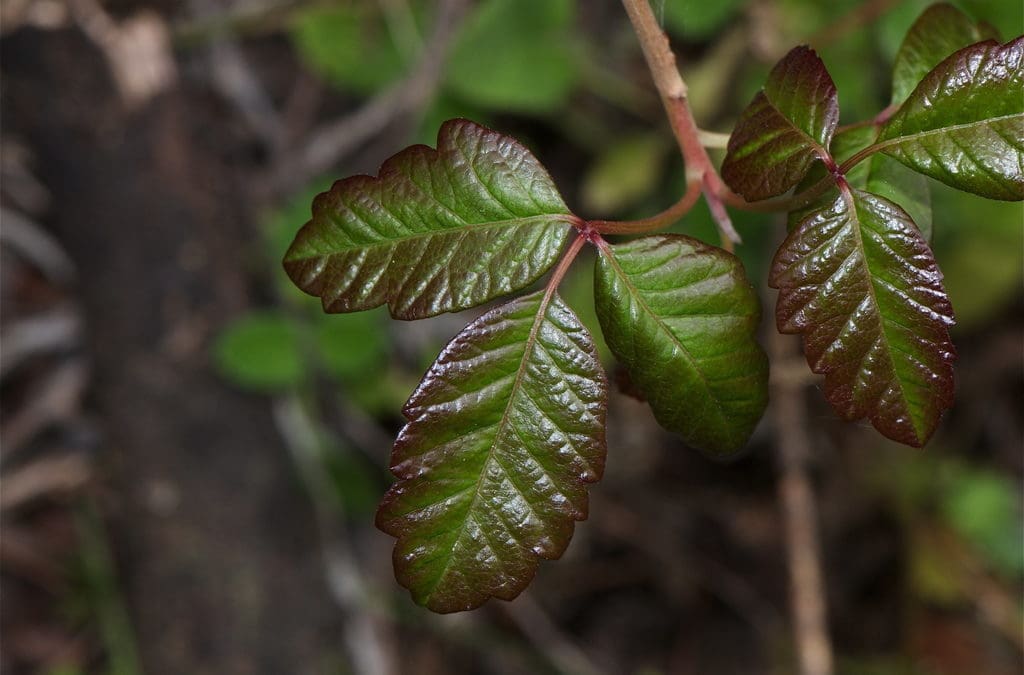Pacific Poison Oak – Toxicodendron diversiloba
Pacific poison oak, also called Western poison oak, is a native plant that you hope to never come into contact with. Pacific poison oak, like the Atlantic poison oak, contains urushiol, which is a powerful and oily substance that causes a very unpleasant reaction when you come into contact with it. After exposure, an itchy rash will show up within a few hours, or even a few days later!
Pacific poison oak is actually a perennial and deciduous shrub—and not a member of the oak family. The leaves of poison oak resemble those of oak trees, hence the name, but it is a shrub although its appearance can often look more vine-like. Pacific poison oak is in the sumac, or cashew, family, and is closely related to poison ivy, which also contains urushiol. Leaves of Pacific poison oak are reddish and shiny when new, turn to green in summer, and finally turn yellow and red before dropping in fall. The urushiol is present year-round in this plant though, even on the bare branches in winter!
Although poison oak is a menace to us humans, it doesn’t harm wildlife and it has its place in our ecosystems. Birds, particularly robins, catbirds, towhees, and grosbeaks, forage on the berries and use the dense foliage for nesting. Other animals, like deer, browse on the leaves or also use the foliage for shelter.
It is important to be able to identify Pacific poison oak, especially if you’re someone who goes camping or visits nature trails. The leaves are the best way to identify this plant—they can be red, green, or yellow depending on the season, are lobed meaning they have indentations similar to oak leaves, and typically have 3 leaflets growing alternately from the branches (leaves of three let it be!). If you find yourself exposed to poison oak, the faster you treat it the better. Using cold water and strong soap to wash the area will remove and keep the oily urushiol substance from spreading. The urushiol can also remain active on fabric and other items, so make sure to wash anything else that potentially came into contact with the plant. If an itchy rash and blisters appear, you can treat topically with calamine lotion, baking soda paste, aloe vera, corticosteroids, and even taking an oatmeal bath. Taking an antihistamine can also help reduce the symptoms. Like many allergens, the reaction can get increasingly worse with each exposure. If you find yourself having a severe allergic reaction, such as difficulty breathing and swallowing, facial swelling, fever, and nausea, seek immediate medical attention.
Learn more:



Recent Comments